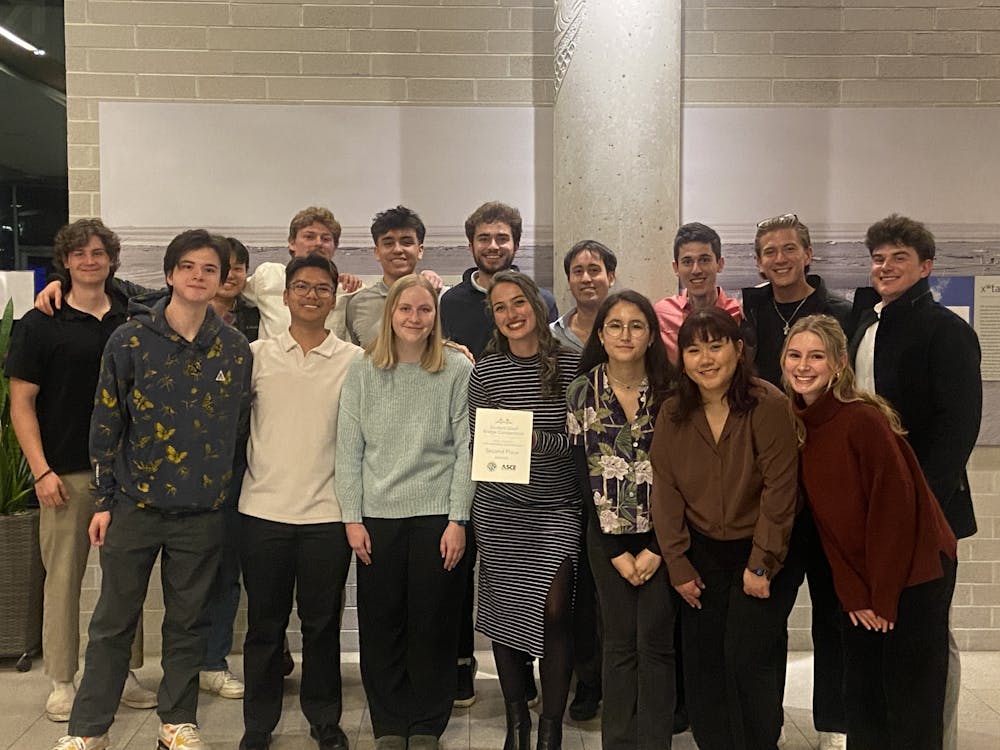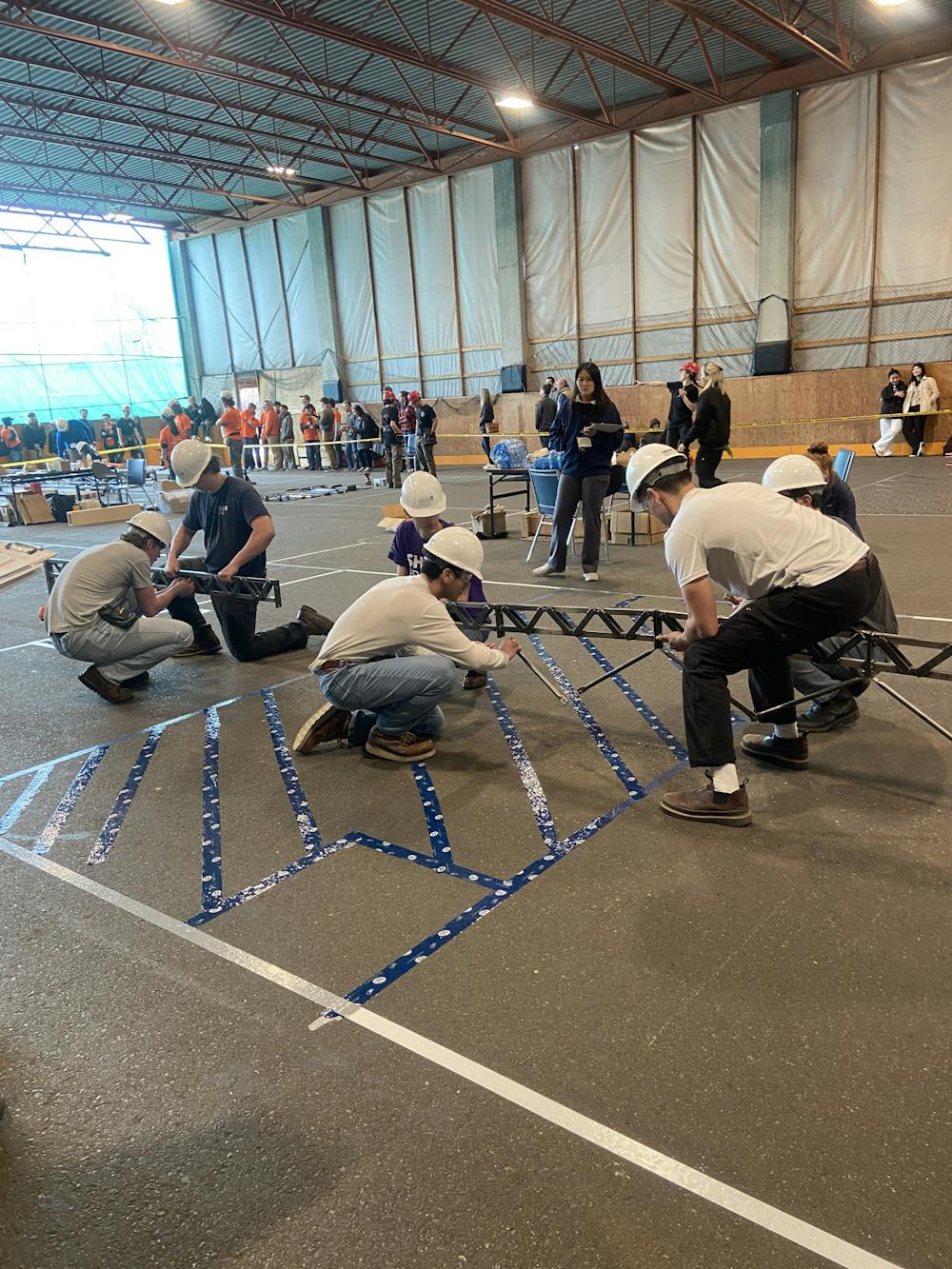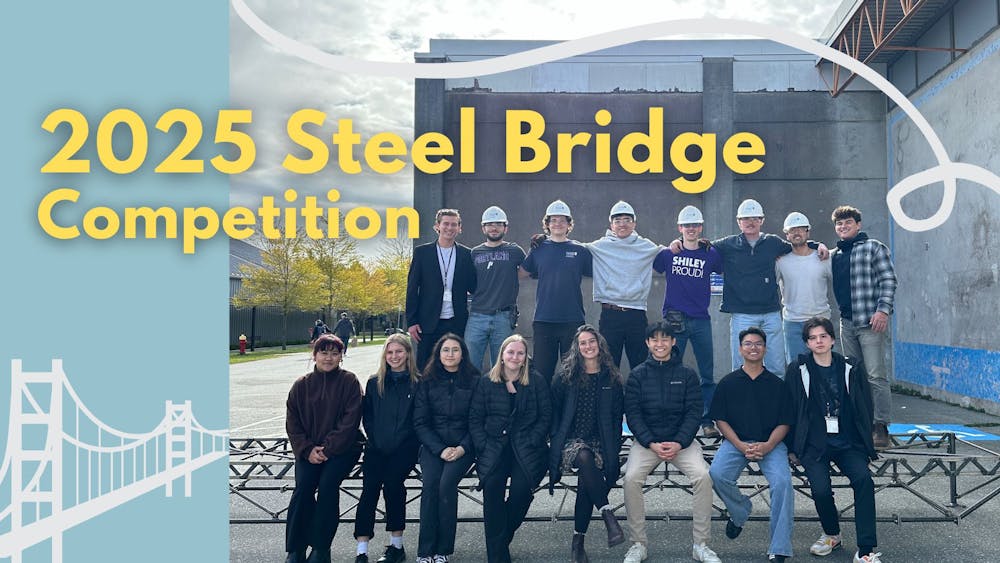As you drive across one of Portland's 12 bridges, many things could cross your mind.
The emails you haven’t responded to or maybe the name of that friend you bumped into downtown — what you probably aren’t considering is the “construction economy,” “stiffness” and “cost estimation” of the overpass.
But five University of Portland students have been tasked with just that as they embark on their capstone project: the 2025 Student Steel Bridge Competition (SSBC).
With regionals taking place in early April at Portland State University (PSU), the national competition, hosted by the American Institute of Steel Construction (AISC), asks students from over 200 participating schools to construct a scale model steel bridge.
This spring, engineering students Mia Greenshields, Ben Macaulay, Laura McEwen, Jack McPherson and Danielle Resendiz will make a bridge for the Skunk River Water Trail in Story County, Iowa. In this build, students factor the river, a small island and protection of local flora and fauna into their design.
After preliminary rounds, the national finals will be held on May 30-31 at Iowa State University.
Last spring marked UP’s first time participating in the SSBC since 2016, and the team won second place in a stiffness category for their bridge model for a man-made river in Lincoln Parish Park, Louisiana.

The SSBC pushes teams to consider the bridges' real-world applications. For example, the bridge should span approximately 20 feet and carry 2,500 pounds. Each bridge is also judged and scored by its stiffness, lightness, construction speed, aesthetics, cost estimation, structural efficiency and construction economy.
Time is money, and if students cannot assemble the bridge within 30 minutes, they face a hefty penalty of an added 150 minutes per AISC guidelines.
Faculty advisors and Shiley School of Engineering instructors Kate Stagl, Matthew Barner and C.J. Hainley aid the university’s five steel bridge team members by reviewing their design structure and working through weak points with the team.
“I will talk [them] through their design, give them some guidance on the types of checks they should be doing to make sure that we're not going to fail for different load scenarios in the competition,” Stagl said. “I'm really just kind of their supporter, their guidance through this and making sure that they're on the right track and going to be successful.”
Though the SSBC team can lean on professors for advice and accept help from other students to weld the bridge, it is ultimately up to the five students to complete it.
Preparation began in September after the AISC released competition guidelines. Using Computer-Aided Design (CAD) and Rapid Interactive Structural Analysis (RISA) software programs, the team created a mock-up of their bridge, keeping in mind, for example, dimensional guidelines. For SSBC participant and senior civil engineering major Mia Greenshields, this phase of preparation is the most time consuming.
“I think the hardest part is probably the RISA modeling,” Greenshields said. “Last year, our team spent too much time in RISA-land, and then by the time we were done with that … we could have finished [RISA modeling] earlier and moved on to CAD drawings.”
This year, the capstone team plans to finish their CAD drawings and other preparatory designs by December so they can move on to welding the bridge.
Senior civil engineering major Laura McEwen originally joined the competition team through a class last spring called EGR 291: Steel Bridge Design and Fabrication. During the class, students gain experience in welding while also building alongside steel bridge team members, according to McEwen.
McEwen, who has been interested in welding since her freshman year, was excited to discover the steel bridge class as an opportunity to practice welding. Now, McEwen is back for the 2025 SSBC, and will put her welding knowledge to work as bridge construction begins.
The team is set to finish the welding stage of the competition in early February or March, according to Greenshields. The one-to-two-month time gap between welding all the pieces of the bridge and the regional competition will be dedicated to practicing timed constructions of the model bridge.

“We’ll practice that a couple times,” Greenshields said. “Or a lot of times.”
As the competition draws near, the team will prioritize working within their timeline, especially with allotting enough assembly practice to prepare them for competition day. Although the competition can be stressful, McEwen also recognizes its upsides.
“There are so many amazing people that go to these competitions, both students and faculty and professional engineers,” McEwen said. “Whether you like it or not, you still get immersed into this very welcoming and diverse culture of people who really want everyone to succeed and get to experience a wide variety of the engineering world.”
Nandita Kumar is a News Reporter for The Beacon. She can be reached at kumarn27@up.edu.
Camille Kuroiwa-Lewis contributed to this story. She can be reached at kuroiwal26@up.edu.








